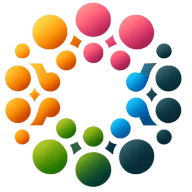12 Strategies for Creating a Culture of Empathy and Understanding
Navigating the complexities of workplace dynamics requires more than just policy—it demands a culture rooted in empathy and understanding. This article distills expert insights into tangible strategies that foster an environment where every voice is valued and heard. Discover how collaborative projects, listening circles, and data-driven support systems can transform the fabric of corporate culture.
- Implement Collaborative Projects for Diverse Perspectives
- Use Listening Circles to Foster Empathy
- Offer Personalized, Data-Driven Support Systems
- Host Regular Team Check-Ins for Empathy
- Conduct One-on-One Check-Ins Regularly
- Implement Structured Active Listening Programs
- Use Intrinsic Value Blueprint for Self-Worth
- Prioritize Personalized Interactions and Education
- Create Structured Employee Resource Groups
- Leverage AI for Personalized Career Paths
- Integrate Emotional Intelligence Training
- Empower Employees with Custom Cybersecurity Training
Implement Collaborative Projects for Diverse Perspectives
Creating a culture of empathy and understanding among employees starts with active involvement in collaborative projects that emphasize each individual's strengths and perspectives. At OneStop Northwest, I implemented cross-functional teams for projects and encouraged open feedback loops. This not only allowed diverse ideas to flourish but also made employees feel their opinions were valued and essential to the project's success.
One effective strategy was using tools like Hotjar to gather anonymous feedback about workplace satisfaction and areas for improvement. By addressing concerns that employees felt comfortable sharing anonymously, we made targeted changes that improved our workplace environment. For instance, introducing flexible work schedules was a direct result of feedback, leading to increased job satisfaction and lower turnover rates.
Additionally, we implemented "Showcase Days," where employees could present their projects and insights to the entire team. This initiative not only showcased diverse talents but also fostered a sense of appreciation and respect among colleagues. Sharing these accomplishments helped build a community where everyone sees the value in different perspectives and experiences.

Use Listening Circles to Foster Empathy
Fostering Empathy with Listening Circles to Create a Culture of Understanding
One effective strategy I've encountered to create a culture of empathy and understanding is implementing regular "listening circles" within the organization.
These sessions provide a safe space for employees to openly discuss their experiences, challenges, and perspectives, with the focus solely on listening and understanding without judgment or immediate solutions.
For instance, during one of our listening circles, an employee shared their experience of balancing work with caregiving responsibilities, which sparked an open discussion about how we could better support team members with similar challenges.
This initiative helped employees feel heard and valued for their unique perspectives, leading to greater empathy and respect across the team. It also inspired the implementation of more flexible work options, which improved overall morale and inclusivity.

Offer Personalized, Data-Driven Support Systems
Creating a culture of empathy in organizations starts with structuring support systems that truly understand and reflect employee experiences. At MentalHappy, we integrated a personalized, data-driven approach through our platform, which includes AI-driven health assessments. These assessments enable us to not only gauge emotional health but also provide relevant peer support, thus fostering a workplace where unique perspectives and experiences are valued and respected.
One effective strategy is offering flexible, HIPAA-compliant virtual support groups tailored to employees' needs. For instance, by implementing group therapy sessions in a behavioral health hospital, our platform achieved over 90% attendance due to the convenience of remote access. This ensures employees feel supported and have a safe space to share personal experiences, ultimately strengthening organizational empathy.
We've also used Big Data to spot trends in user engagement, like a rising demand for creative intervention groups. This insight helped us create specialized groups, boosting personal expression and emotional healing, which translates to improved empathy and support in the workplace. Leveraging such data-driven strategies exemplifies how organizations can authentically value and respect diverse employee experiences.

Host Regular Team Check-Ins for Empathy
Creating a culture of empathy and understanding begins with actively listening to employees and valuing their input. One strategy I have found particularly effective is hosting regular team check-ins that go beyond work updates to include personal and professional reflections. In my experience leading Ponce Tree Services, a family-owned business for over 20 years, these sessions have allowed our team to share their challenges, celebrate their wins, and learn from one another. For example, during a particularly busy season, one of our crew members shared that they felt overwhelmed managing their work schedule alongside family responsibilities. By taking the time to listen and understand their situation, we adjusted their workload and offered additional support, which not only improved their morale but strengthened the trust within our team.
As a certified arborist and leader with decades of hands-on experience, I have learned that empathy in the workplace is not just about listening; it is about taking actionable steps to address concerns and build a supportive environment. This approach has led to higher employee satisfaction and retention, which directly translates into better service for our customers. When employees feel valued for their unique perspectives and supported in their roles, they are more motivated and connected to the company's mission. It is a win-win that cultivates both individual growth and collective success.

Conduct One-on-One Check-Ins Regularly
Creating a culture of empathy and understanding in any organization starts with active listening and intentional action, which I've seen firsthand in my years running Ozzie Mowing & Gardening. One strategy I've found particularly effective is implementing regular one on one check-ins with team members, not just to discuss work performance, but to understand their challenges, aspirations, and feedback on workplace dynamics. For example, in my team, we noticed early on that some members were hesitant to voice their concerns in group settings. By creating a safe and private space during these check-ins, I was able to understand not only their professional needs but also their personal motivations and pressures.
As a certified horticulturist with over 15 years of experience, I know the value of nurturing individuals just as you would a plant by giving them tailored care and attention. In one case, a team member was struggling with time management due to external responsibilities. Through these conversations, we adjusted their schedule, which improved their overall productivity and morale. This approach does not just benefit the individual, it fosters a ripple effect of trust and collaboration across the team. Building such a culture requires consistent effort and genuine interest in people, but the outcome is a team that feels valued, performs better, and works together seamlessly. My background in both theory and hands-on experience with hundreds of projects has taught me that growth, whether in a garden or a team, comes from understanding and care at every level.
Implement Structured Active Listening Programs
Building a Culture of Empathy Through Active Listening Programs One effective strategy for fostering empathy and understanding in organizations is implementing structured active listening programs. These programs encourage employees to share their perspectives in a supportive environment while empowering leaders and peers to truly hear and validate those experiences. Why Active Listening Works Active listening goes beyond hearing words—it involves understanding, reflecting, and responding thoughtfully. When organizations create intentional spaces for this practice, employees feel valued, respected, and more connected to their team. Key Components of Active Listening Programs Dedicated Listening Forums Regularly scheduled forums, such as employee resource groups (ERGs), town halls, or smaller focus groups, provide employees with safe spaces to express their thoughts and experiences. Structured facilitation ensures all voices are heard without fear of judgment or interruption. Leadership Training in Empathy Equip managers and leaders with skills in empathetic communication through workshops or training sessions. Teaching them to listen without bias and respond with understanding sets a powerful example for the rest of the organization. Anonymous Feedback Channels Offering avenues for anonymous feedback helps amplify voices that may otherwise go unheard. Coupled with transparent follow-up actions, these channels demonstrate that employee input is valued and acted upon. Celebrating Diverse Stories Encourage employees to share personal stories, cultural experiences, or perspectives in team meetings, newsletters, or intranet platforms. Highlighting these narratives fosters connection and mutual understanding across teams. The Impact Organizations that prioritize active listening create a culture where employees feel seen and valued for their individuality. This approach strengthens trust, enhances collaboration, and drives a deeper commitment to organizational goals. By embedding empathy into everyday interactions, businesses can build teams that thrive on mutual respect and shared purpose.
Use Intrinsic Value Blueprint for Self-Worth
One effective strategy I've employed as a life and change coach is the Intrinsic Value Blueprint. This tool emphasizes building self-worth and aligning daily actions with core values, which translates into a workplace culture valuing individual strengths and perspectives. It's about empowering each team member to see their unique contributions as integral to the organization's mission.
In my coaching practice, I've witnessed how focusing on men's issues transforms personal struggles into strengths. For example, when guiding a client through career transitions, we tapped into the S.T.E.A.R. Cycle framework. This turned limiting stories into empowering actions, fostering a sense of belonging and understanding within team settings.
A practical instance involved a client in a leadership role who revamped their team's weekly meetings to be more inclusive. Adopting a format where everyone shared "one new strength" they found that week, this shifted the group's dynamic. Employees felt valued for their individual experiences, bolstering both engagement and empathy.

Prioritize Personalized Interactions and Education
Creating a culture of empathy and understanding starts with prioritizing personalized interactions. At Stanley Insurance Group, we ensure every client speaks directly to a real person, avoiding automated systems. This approach strengthens relationships and respects each client's unique perspective, translating effectively to employee interactions.
One strategy that has been effective in our organization is the inclusion of extensive educational opportunities for team members. By offering comprehensive training on insurance nuances, employees feel more confident in their roles, which fosters a respectful and understanding workplace. This knowledge-sharing encourages diverse ideas and experiences to be valued within the team.
Additionally, developing strong community connections has been vital. By participating actively in local events, our staff gains insight into the community we serve, increasing empathy and understanding toward diverse client needs. This engagement nurtures an inclusive organizational culture where each employee's contribution is respected.

Create Structured Employee Resource Groups
Hi I am Brayn, an HR Manager at ProProfs, helping to build the right teams and foster a positive culture at the workplace. I drive organizational success through talent acquisition, employee engagement, and performance management.
One highly effective strategy I've encountered for fostering a culture of empathy and understanding is implementing structured employee resource groups (ERGs). These groups provide safe spaces for employees to share experiences, celebrate diversity, and discuss challenges. They help foster a sense of belonging by amplifying unique voices within the organization and driving awareness about different perspectives.
The key benefits of ERGs are improved cross-cultural understanding, better peer-to-peer support, and enhanced engagement as employees feel seen, valued, and empowered to contribute authentically to the organization's success.

Leverage AI for Personalized Career Paths
At Audo, I've seen how a data-driven approach to personal growth can build a culture of empathy and understanding. By leveraging AI to assess and develop employee skills, we create personalized career paths. This empowers each team member, acknowledging their unique capabilities and fostering a sense of value and respect.
An example of this in action is our collaboration with non-profits and educational institutions. By aligning with their missions to empower underserved communities, Audo not only provides skill-building opportunities but also cultivates an environment where diverse perspectives are celebrated. This results in improved organizational empathy and appreciation for unique experiences.
Furthermore, by using AI-driven insights for strategic workforce development, we ensure that employees' aspirations are in sync with company goals. This alignment supports a workplace where individual contributions are not just recognized but are integral to collective success, cultivating a deeply empathetic and respectful culture.

Integrate Emotional Intelligence Training
Creating a culture of empathy and understanding begins with fostering authentic recognition and appreciation within the workplace. During my time at Give River, we've seen how real-time recognition, like our virtual "drops," can transform team dynamics. When recognition becomes a natural part of communication, employees feel valued for their unique contributions, boosting engagement and morale.
One effective strategy is integrating emotional intelligence training into professional development. It's a technique I've promoted in our platform to help teams listen deeply and communicate effectively. The impact is profound: employees who believe management values them as individuals report higher productivity and satisfaction, leading to better organizational outcomes.
Incorporating community impact initiatives also nurtures empathy. At Give River, our signature event is a "Virtual 5K Charity Run," which promotes generosity and collaboration. This experience unites teams under a shared purpose and bridges generational gaps, creating a culture where everyone feels connected and respected. One powerful strategy is integrating gratitude into daily work culture. At Give River, we use our "drops" system to reward and recognize employees in real time for their contributions. This simple act of acknowledgment boosts morale and fosters a culture where everyone feels valued and respected for their unique contributions.
Research by Gallup shows organizations with high employee engagement have significantly better outcomes, including a 22% increase in profitability. By embedding gratitude into workplace interactions, we create an environment where emotional intelligence and empathy naturally flourish, which improves team collaboration and understanding.
Our platform's gamified recognition program shows that employees who feel appreciated are 53% less likely to leave, creating a stable and committed workforce. This method not only improves productivity but also cultivates a genuine sense of belonging and respect among team members, as everyone is encouraged to participate in recognizing each other's efforts.

Empower Employees with Custom Cybersecurity Training
In my experience at ETTE, creating a culture of empathy starts with empowering employees through custom cybersecurity training. By ensuring that the training aligns closely with individual needs, we respect each person's unique learning preferences and their role within the organization. This approach makes them feel valued and reinforces their importance in the broader organizational mission.
Additionally, implementing network security measures that involve employees as active participants in safeguarding sensitive data fosters a sense of responsibility and trust. When employees understand their key role in cybersecurity, they feel respected for their contributions to a safer workplace, which naturally improves empathy and understanding.
To truly embed empathy within company culture, I advocate for inclusive design thinking. At ETTE, designing IT solutions that cater to diverse client needs has shown me that valuing diverse perspectives yields more holistic, innovative solutions. Organizations can apply this by encouraging teams to appreciate varied viewpoints, leading to a workplace where every individual's voice is respected.




